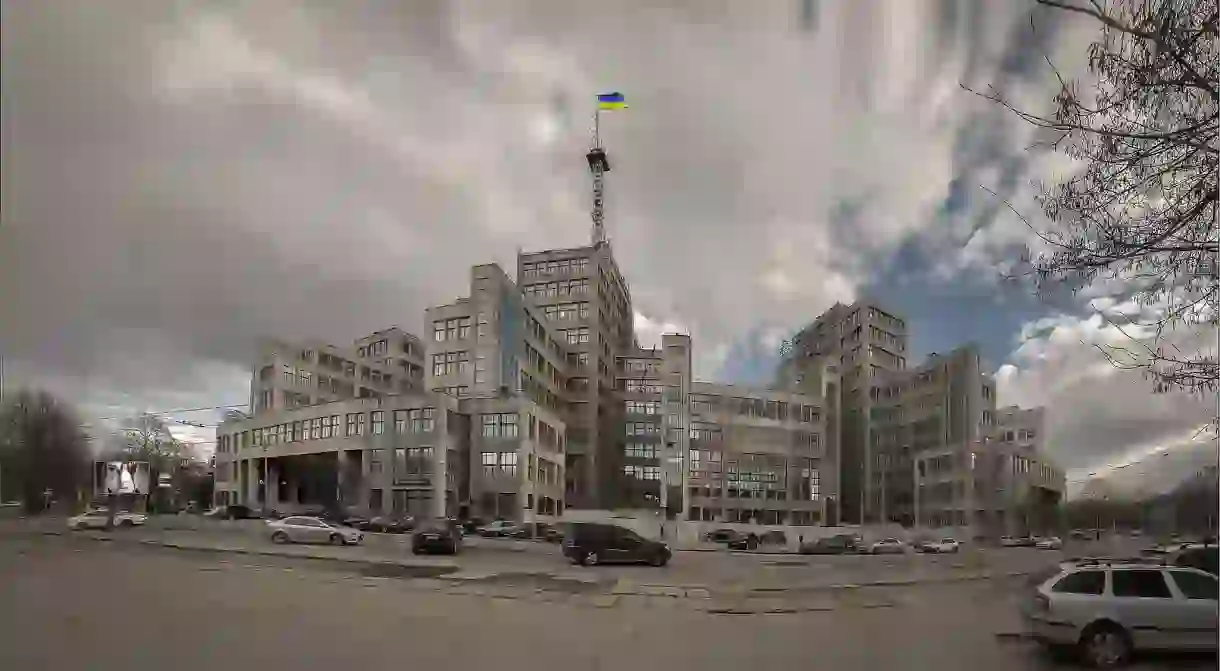An Art Lover’s Guide to Soviet Architecture in Kharkov

The main period of Kharkov’s construction falls on the 20th century. There are obvious features of modernism and constructivism, as well as of Stalinist empire architecture style. The former capital of Ukraine has the scape of the large industrial city, Kharkov is today.
The Derzhprom
Building

Vasyl Karazin Kharkov National University
University

Howev Vasyl Karazin Kharkov National University was founded in 1805, the modern building of the establishment was built in 1930–1932. It is another architectural monument in the style of Constructivism, which stands nearby the Derzhprom on the Svobody Square. Until 1954, it was one of the tallest buildings not only in Kharkov but in Ukraine, towering up to 66 meters (216 feet). Interestingly, the damage to the building during the Second World War was followed by its reconstruction and changed to the Stalinist empire style.
Svobody Square
Memorial

The history of Kharkov’s Svobody Square traces back to the first half of the 20th century and the times of the Derzhprom construction. To correspond to the title of a capital, three adjacent quarters of the city centre were cobbled, thus forming one of the largest squares in Europe and the whole world. Nowadays, it a major destination for tourists, willing to discover the peculiarities of Soviet architecture (scale and geometricity) and to marvel the historical attractions of Kharkov.
Railway Station
Building

The place we today refer to as Kharkov Railway Station is actually the third incarnation; it opened in 1952. The previous stations were destroyed during WWII. It has the features of the Stalinist empire style, combining elements of Classicism, Baroque and Art Deco. The Station Square or Pryvoksal’na Ploscha and its monuments are also worth attention.
Kharkov Regional State Administration
Building

The 6-storey building of Kharkov Regional State Administration is yet another gem of Soviet architecture. Constructed in 1954 for the regional committee of the Communist Party of Ukraine, it surprises tourists with a splendid façade and monumental columns. However, it perfectly fits into the extraordinary ensemble of the central Sumska Street, which harmoniously hosts the numerous historical sights of the city and 21-century murals.
House With a Spire
Building

In the very heart of Kharkov, one can gaze at the incredible Soviet construction of the House With a Spire. It is an ordinary dwelling house that was built at the beginning of the 1950s in the style of the Stalinist empire. The house was included in the list of Kharkov’s Seven Wonders, including Svobody Square, the Mirror Stream fountain, the Derzhprom and other sights. Also, the story in Serhiy Zhadan’s (one of the best contemporary Ukrainian writers) novel Depeche Mode takes place in this house.
Mirror Stream fountain
Park














